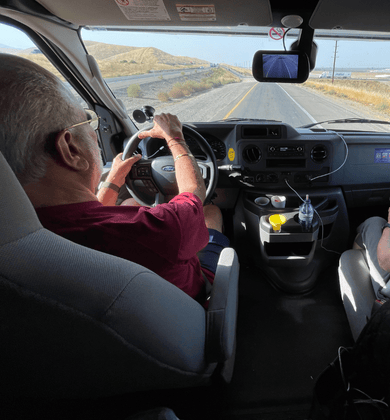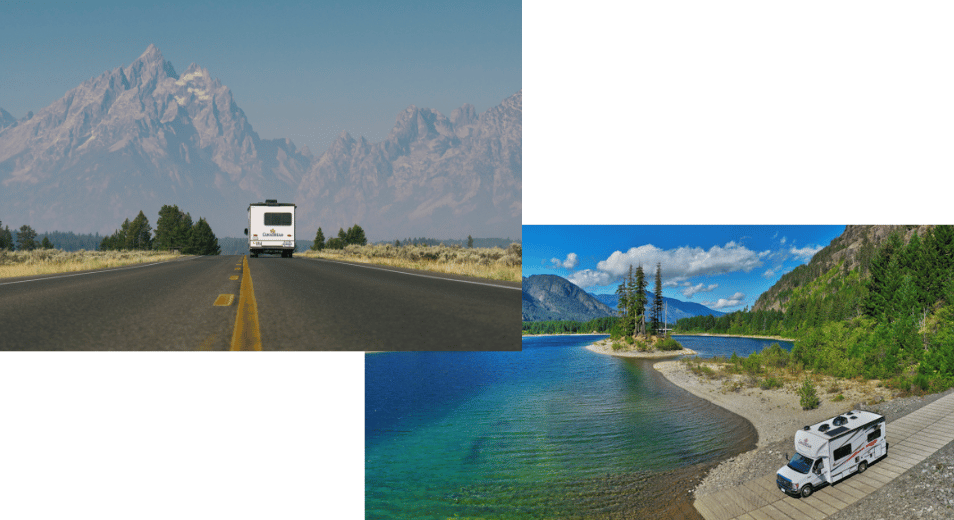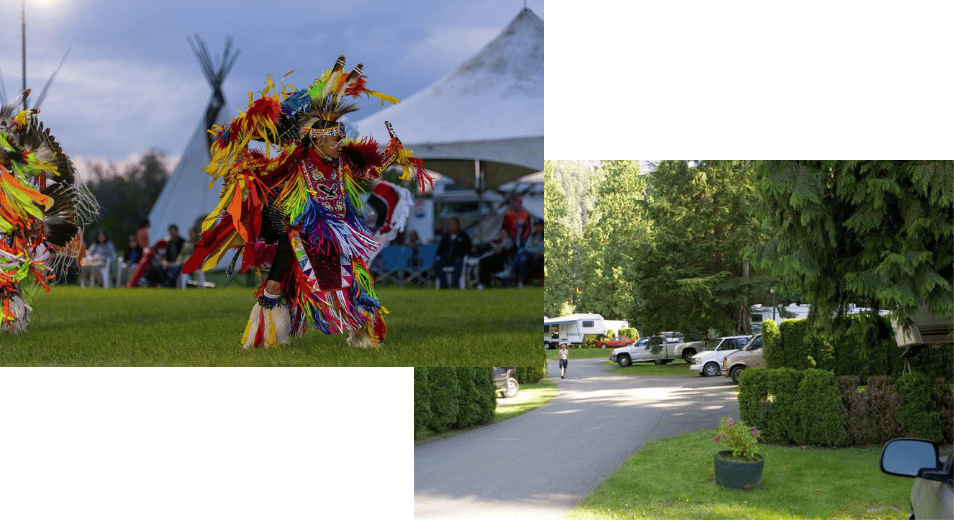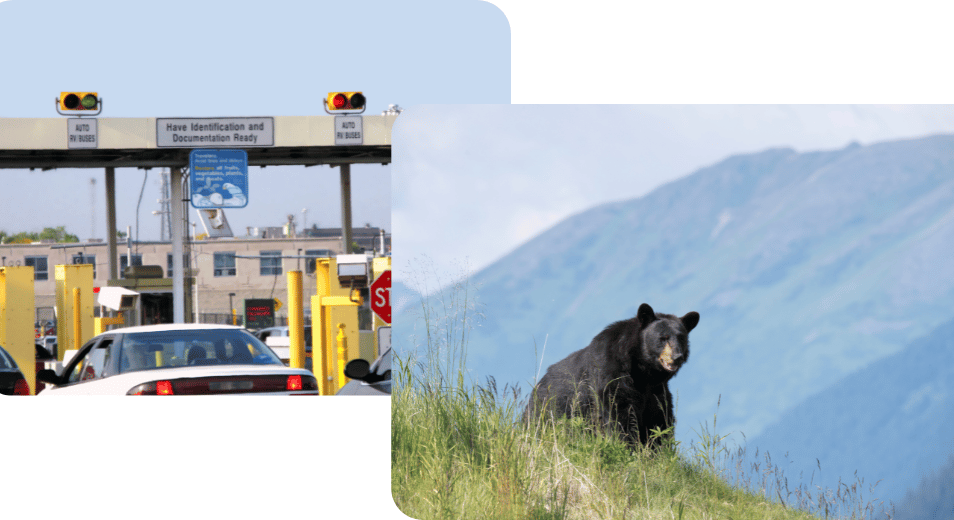
Know before you go
Your RV Vacation Guide
Canadians love welcoming visitors from around the world but know the importance of protecting our environment and respect for others. This Know before you Go guide for international visitors will ensure they get the most the most out of their RV vacations here.
Arrival
Entering Canada by land or air
Have your documentation ready to present to immigration officials. If you are visiting from a non visa waiver country, ensure you have your Visa with you. If you are arriving from a Visa waiver country, ensure you have completed your Electronic Travel Authorization (ETA). Passports are essential for all visitors.
Know what you can and cannot bring into Canada. Declare all food, plant and animal products.
Take own transportation to your accommodation. If you are arriving the same day as you are picking up your RV, make your own way to our Pick-up location.
Picking up your RV
You will have chosen your pick-up time from available times when you did your online check-in. Please arrive promptly at the branch to avoid delays in getting you on the road. You should expect to spend up to an hour here before leaving our location.
Driving in Canada
Driving in Canada is about more than being able to steer. Drive on the right. You should learn about road signs and the rules on government of Canada websites. The official websites tell you key details about driving in Canada and why you must always use seat belts. These are very important for all locals and visitors traveling on the road. Be respectful to other motorists when driving in Canada. Pull over where safe to do so and let others pass you on the highway if you are travelling slower than the traffic behind you.

Cultural Awareness
Canada is a melting pot of many different nationalities and cultures. Canada is home to diverse Indigenous cultures: First Nations, Métis, and Inuit. Each has its own ways and identity.
First Nations is the biggest group. They have spiritual and lasting ties to their land. This group has many tribes, like the Cree and the Ojibwa.
The Inuit live in northern Canada. They do well in Arctic places by hunting and fishing. Inuit art is known everywhere for the deep stories it tells.
Métis people have both Indigenous and European roots. Their culture mixes both, and they are famous to all for their beads and music. These three groups together show how diverse Canada’s indigenous peoples are. Their unique culture changes and builds what Canada is today.
Acknowledging traditional territories and learning about Indigenous history is encouraged. When visiting Canada, you will have many opportunities to experience their culture, through festivals, dances, food and art and it’s important to respect their cultures when visiting their sites and interacting with them. Destination Indigenous is a good place to begin looking for an indigenous experience on your travels.

Understanding campsites & RV Parks
You’ve planned your route and know where you are visiting and the type of activities you want to do. If you’re travelling by RV, you will most likely be staying in private or public campsites, national or provincial parks. For national parks, check out the Canada Parks App which has a ton of useful information for your trip. Book your campsites ahead of time as in the peak summer months it can be difficult to secure a site without advance reservations. On arrival check in with the local ranger station or Visitor Center to get orientated for your visit and for advice on current conditions. It is important to know the rules and follow them, take the time to find out and understand what is required.
Private campsites generally have full hookups while provincial and public campsites tend to be more basic. Check out the available facilities before you make your booking. Whichever type of campsite you choose to stay at, ensure you make every effort to leave no trace where you camp and dispose of waste and trash responsibly.
Climate and Weather
Unless you are a lover of travelling during winter, the best time to plan an RV trip in Canada is from April to the end of October. While you might experience snow in the mountains in Spring and Fall, generally the weather is suitable for camping in all parts of Canada. Eastern Canada tends to have a longer snow-free Fall while snow can fall in the Rocky Mountains anytime from early to mid September. Temperatures will fall in northern parts of Canada (including the Yukon) from late August on so it’s important to be prepared for all types of weather, regardless of the time of year you are travelling.
Border Crossings
Canada and the USA have the longest land border in the world and your plans may include either visiting Alaska or entering mainland USA. Make sure you are prepared at land crossings. This includes having your paperwork in order, passports ready and knowing what you can and cannot take across the border. Know that many agriculture products (including some foods) are prohibited entry into the USA. You may be subject to having a border agent entering your RV to check your fridge. Please be respectful to these agents as they determine whether you have any food or other items which cannot be taken across the border.

National and Provincial Parks and Wildlife areas
National and provincial parks are areas set aside to protect the environment and allow free roaming of wildlife. Whether you are a day visitor walking a trail or overnight camping in a national or provincial park, it’s important to be respectful of your environment. Watch wildlife from a safe distance. Understand the impact of human presence on wildlife and why it is important to keep wildlife wild. Practice Leave No Trace principles to reduce your environmental footprint.
Communication
Canada is a large country . The main cellphone carriers are Bell, Telus and Rogers with 99% of the biggest cities being covered by these networks. Outside of the main cities, less than 30% of Canada’s geographic area has cellphone coverage so it is likely you will be travelling in areas where you cannot call or text. If your itinerary includes remote northern areas (like the Dempster Highway or travelling into Alaska), you might like to consider renting a satellite phone as peace of mind should you have an emergency.
Frequently Asked Questions
What documents do I need for an RV trip in Canada?
For an RV trip in Canada, you will need a few important papers. Make sure you have your passport and a valid driver’s license. CanaDream RV’s can be driven on your own country’s driver licence. If you are from a country requiring a Visa to visit Canada, ensure this is in order before you arrive. Visitors from Visa Waiver countries need to be in possession of an Electronic Travel Authorization to enter Canada. The Government of Canada website has a list of entry requirements by country or territory.
Are there special driving rules for RVs in Canada?
Yes, if you drive an RV in Canada, you need to be aware of both federal and provincial laws. Be aware of four way stops, school and playground zones and pedestrian rights. Go to the Government of Canada’s Driving in Canada webpage for helpful information about driving in Canada.
How do I find RV-friendly campsites across Canada?
To find campsites that be good for RVs, explore our CanaDream Club pages. CanaDream has partnered with many provincial and private campground who offer discounts to CanaDream Guests. To find National Park campgrounds, Parks Canada has an informative website showing where campsites are and how to book them. Public camping with no facilities is possible on crown land but we recommend staying in established campgrounds.
What should I know about crossing borders with my RV?
When you travel between the United States and Canada in your RV, make sure you follow all rules at the port of entry. You have to show your passport and the right papers when asked. Check the official websites for the latest updates on what is needed to get in and out. This will help you know what to do and keep your trip smooth.





